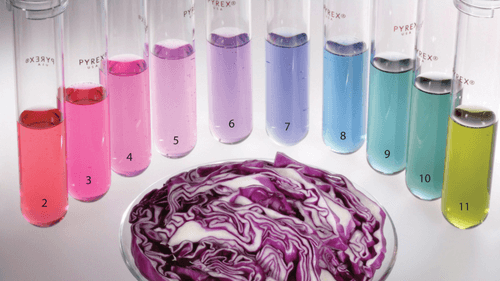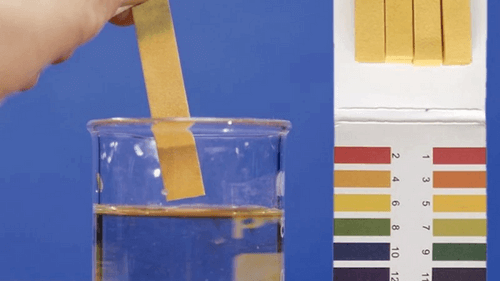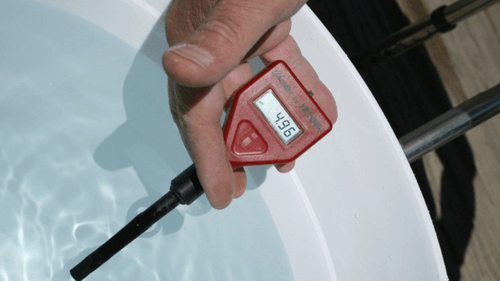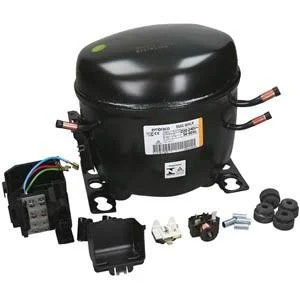How To Test pH Of Water Without A Kit?
The pH of the water can determine if it is drinkable or not. As such, you should always test the pH levels.

Moreover, if the water has favorable pH levels, you can raise different types of aquatic species and plants. For instance, freshwater fish require pH levels ranging from 6.5 to 8.0, while marine fish require ph levels of 8.0 to 8.4.
However, testing water pH levels can be tricky since you require a dedicated testing kit. Since these testing kits are expensive, you may not be able to purchase them if you have a tight budget. On that note, we have listed a few methods that can help you to test the pH levels.
So, without further ado, let’s proceed to the next section!
How To Test Water Without A pH Testing Kit Using A Red Cabbage

If you want to test water pH levels without a kit, you can use red cabbage since it is easily available on the market. Besides, this process of testing water doesn’t require any complicated steps or technical knowledge. You can begin the process by cutting the red cabbage and grating it into small sizes. Moreover, you can use a clear glass bowl to collect the grated cabbage.
Once you are done with the grating, leave the cabbage to rest in the bowl while you boil two cups of distilled water. Make sure that the distilled water is boiled in a separate pot since we don’t want to disturb the cabbage for the time being. After the distilled water has reached its boiling point, you can pour it over the cabbage.
The grated red cabbage should be submerged under boiling water and stirred briefly with a wooden spoon. You can then leave the red cabbage to soak in the water for around 30 minutes. This causes the red cabbage to undergo a chemical reaction which can trigger it to lose some of the pigment molecules. The pigment molecules blend with the distilled water and form a purplish red color solution which will be our pH indicator solution.
pH Indicator Solution
Now that we have prepared the pH indicator solution using grated red cabbage, let us understand how it works. To test the pH of water, simply pour a small amount of it into a clear glass container and add a few drops of pH indicator solution. You will instantly notice that the color of the water changes according to the pH level.
It can either be neutral (purple), acidic (pink or red), or alkaline (bluish-green, blue, green-yellow). Take a close look at the red cabbage pH color chart to see which numerical pH value the water has.
Normally, the pH scale ranges from 0-14. As such, pure water has a neutral pH level of seven, and lower numbers indicate acidic water. Consequently, any numerical pH value above seven indicates alkaline water.
Apart from cabbage, you can use other fruits and vegetables to make pH indicators. For instance, you can use grapes, apples, blueberries, red onions, and turmeric to prepare the solution.
Some people even prefer to use rose petals to prepare the indicators. You can also use the cabbage solution to make pH testing strips which we shall discuss in the next section.
How To Prepare DIY pH Testing Strips Using Red Cabbage
Although the red cabbage solution is one of the easiest ways of testing pH levels, it still has one major drawback – you can not store the solution for too long. As such, preparing ph testing strips can help to overcome this major drawback since they are easy to store and they don’t expire easily.
To prepare your own pH testing strips, you will require filter paper which can be soaked in the cabbage juice solution. Notably, acid-free art papers and coffee filters are ideal for this DIY project since they are easily available on the market and affordable. Immerse the filter paper into the solution and let it soak for some time till it is thoroughly wet.
After the paper has soaked a considerable amount of the solution, you can remove it and place it in a dry neutral environment that doesn’t contain acids or alkaline condensation. Once the paper has dried up completely, you can cut it into strips and use them whenever you want to test the pH level of the water.
Simply apply a few drops of water on a cotton swab and smear the sample onto the pH test strip. The strip will instantly change colors according to the pH levels in the water. So, you can compare the strip with a pH color chart to check if the water is acidic, alkaline, or neutral.
Other Methods Of Testing pH Levels
1. Litmus Paper Strips

The litmus paper strip is one of the most commonly available test kits, which you can purchase from a local chemist. The strip can turn to an acidic or alkaline response depending on the pH level of the tested water. In general, the strips are available in two colors which are blue and red.
Blue litmus paper instantly turns red whenever it comes in contact with acidic water. However, it doesn’t show any change if it comes in contact with a neutral or pure water sample. On the other hand, red litmus paper turns red whenever it comes in contact with an alkaline water sample.
However, using litmus paper may not always give you accurate results. As such, a pH testing strip is ideal since it can define the exact pH level of a solution.
Moreover, these test strips should be stored in a dry room that doesn’t contain any acidic or alkaline substances. Normally, the pH strips have an expiration period of three to six weeks, so you should use them within that period.
2. Digital pH Meter

Apart from using pH test strips, you can opt for a more accurate way to test pH levels by using a digital pH meter. In fact, a pH meter can help to reduce the chance of error which is prone to happen while conducting the test.
One common error people make while testing the pH levels with litmus paper, or the pH strips is the color accuracy. Since most people see color differently, there is a high chance that people might record the wrong color during the test. Similarly, a pH meter eliminates the scope of errors that may occur when the sample is contaminated by mishandling.
For instance, using outdated strips or storing the strips incorrectly can cause inaccurate readings. As such, a pH meter is more reliable since it doesn’t depend on color change but rather measures the amount of hydrogen-ion present in the water. Moreover, it displays the exact numerical value of the tested water.
To confirm the accuracy of the pH meter, you can compare the results with an established pH substance. Take the established pH substance and verify the pH levels using the pH meter. Once that is done, you can rinse the probe tip by applying double-deionized water since it is extremely effective in removing contamination and residue samples.
Dry the tip with clean tissue paper and let the pH meter rest as you prepare the sample for the test. Make sure to pour the water into a clean container and let it rest in the room till the temperature becomes stable. If you try to test the sample instantly, the contrast in the room and sample temperature can affect the accuracy of the result.
Once the sample has reached a stable temperature, you can test and compare if the two samples show similar results.
How Does Water Turn Acidic Or Alkaline?
Water usually tastes better when it has a pH value of seven. Moreover, it is healthy to drink neutral water since it doesn’t cause any harm to the body. Another benefit of neutral water is that it doesn’t cause any damage to the plumbing system.
Several factors can affect the pH of the water and cause it to turn acidic or alkaline in nature. For instance, acid rain, different types of minerals and rocks, metal leaching from pipes, and pesticides can change the pH levels in the water.
Depending on the pH level, alkaline water can have a bitter or soda taste which makes it undrinkable. Apart from that, it can cause corrosion in the pipes, which can lead to leakages in the future.
In fact, water that has a pH level of 9 and above can easily corrode metals such as brass, aluminum, iron, copper, and zinc. As such, you might notice deposits of metal on the dishes whenever you are cleaning them. Alkaline water also causes a lot of problems while bathing since soap lathers less.
Similarly, acidic water has a more sour and metallic taste which makes it unfit for daily use. Additionally, if the water has a pH level of less than 6.5, you must be careful since it contains harmful toxins. Metals such as iron and manganese are found in acidic water, and they can cause severe health problems.
Regarding plumbing systems, acidic water can cause pipes to break down and collapse completely. You might notice the clothes having blush stains due to the leached metals present in the water.
How Can You Neutralize Water pH?
As we have mentioned earlier, acidic and alkaline water is not safe for daily consumption since it can cause a lot of damage to your health and property. Thus, experts recommend using acidic substances to neutralize base alkaline water. In the same way, you can use base alkaline substances to neutralize acidic water.
Apart from that, there are three other ways of neutralizing the pH levels in the house. The first method involves using a filter to eliminate acidic and alkaline substances in the water. Substances such as calcium carbonate are best suited for neutralizing alkaline water. Similarly, you can use magnesium oxide to filter acidic water.
In contrast to this method, you can install an injection system in your main plumbing. This system pumps substances that help to neutralize the water and make it drinkable. For example, soda ash is one of the best options for neutralizing acidic water. You can also use acetic acid if you have high alkaline levels present in the water.
However, the injection system requires a lot of maintenance which makes it tough to clean the filtration system. As such, you might have to hire a professional to maintain the injection system from time to time.
Lastly, you can purchase a water distillation system which is the most effective way of neutralizing water and making it drinkable. In addition, it is easier to maintain a distillation system. The distiller’s main role is to heat and eliminate all acidic particles in the water, which makes it safe for daily use.
Conclusion
When it comes to testing the pH level of the water, you can use different tools and methods. For instance, you can use a pH test meter, pH test strip, blue litmus paper, and many more.
The cabbage juice indicator is one of the easiest ways of testing pH level since you can make the solution within the comfort of your home. Moreover, you can ensure that the water has a low pH level by using filter paper or a filter device.
Besides, if the water lacks the desired pH levels, you can add a few drops of pH enhancer to increase the level. However, you must follow the instructions given by the manufacturer while pouring the solution into the water. Excess drops can make your water have a more acidic pH or alkaline pH level.
That said, stay safe, and see you next time!




![How To Add Apps To A Samsung Refrigerator [Quick Guide]](https://breezerfreezer.com/wp-content/uploads/2022/07/How-To-Add-Apps-To-A-Samsung-Refrigerator.png)